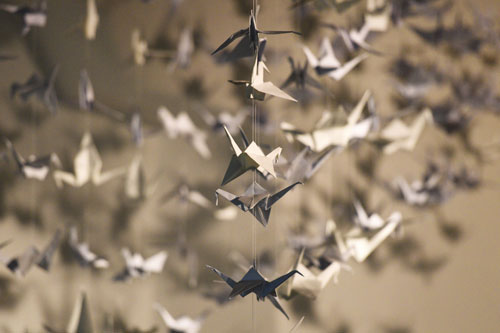Sadako Sasaki was only two and a half years old when the atomic bomb exploded over her hometown Hiroshima on August 6, 1945. 140,000 inhabitants were immediately dead or died within a few days, others seemed to have survived the first nuclear attack in history. Sadako also spent the following years of her childhood without any visible signs of radiation. But at the age of 12, she was caught up in the late effects of the atomic bombing. Sadako fell ill with leukaemia.
A friend told her about the old Japanese belief: If you fold 1,000 cranes from paper using the origami technique, your heart's desire will be fulfilled. Sadako set to work and folded over 1,000 cranes. Nevertheless, she died of leukaemia in October 1956, shortly before her 13th birthday. A handful of tiny paper cranes, which she had folded with her last strength, were her only legacy. The family decided to carry the legacy of the deceased girl out into the world. In October 2009 Sadako's younger brother brought one crane to the Peacecity Stadtschlaining. Since then the crane is also part of the ACP logo.
Even though Sadako's crane is only a few millimetres small, it stands as a symbol for the greatest dream of mankind: peace. It serves as a memorial against the madness of war and for a worldwide peaceful coexistence.
The 10th anniversary of Sadako's Crane in Stadtschlaining in 2019 was taken by the ACP and the Peace City Schlaining as an occasion to set a sign for peace. At the city entrances this was made visible to everyone in the form of banners with quotations, and all over the country organizations and individuals participated by folding cranes. At the end of the campaign, more than 7,000 paper cranes were sent to Japan to the Hiroshima Peace Culture Foundation, which wants to contribute to the worldwide promotion of peace and international cooperation by remembering the dropping of the atomic bomb.

